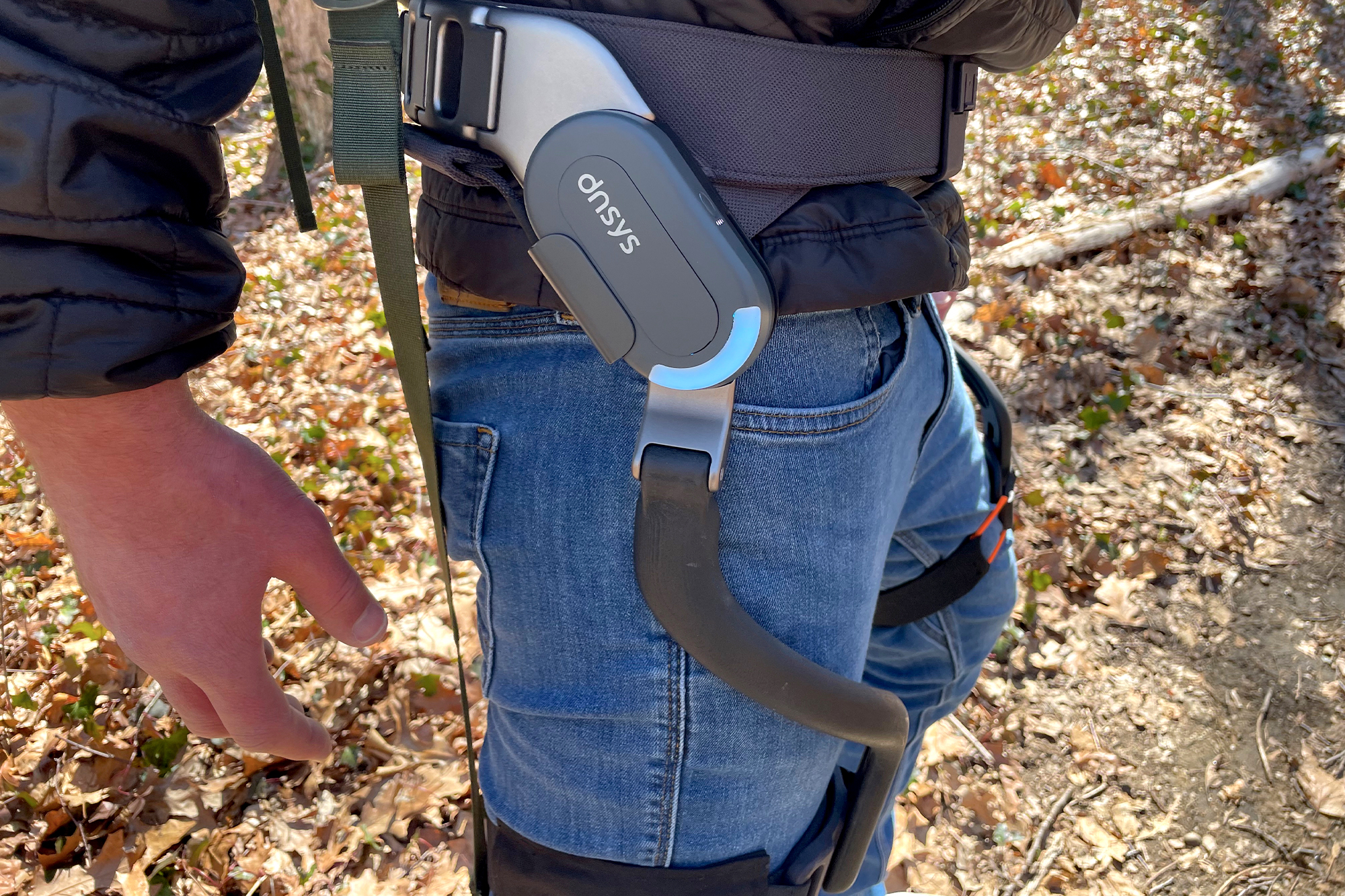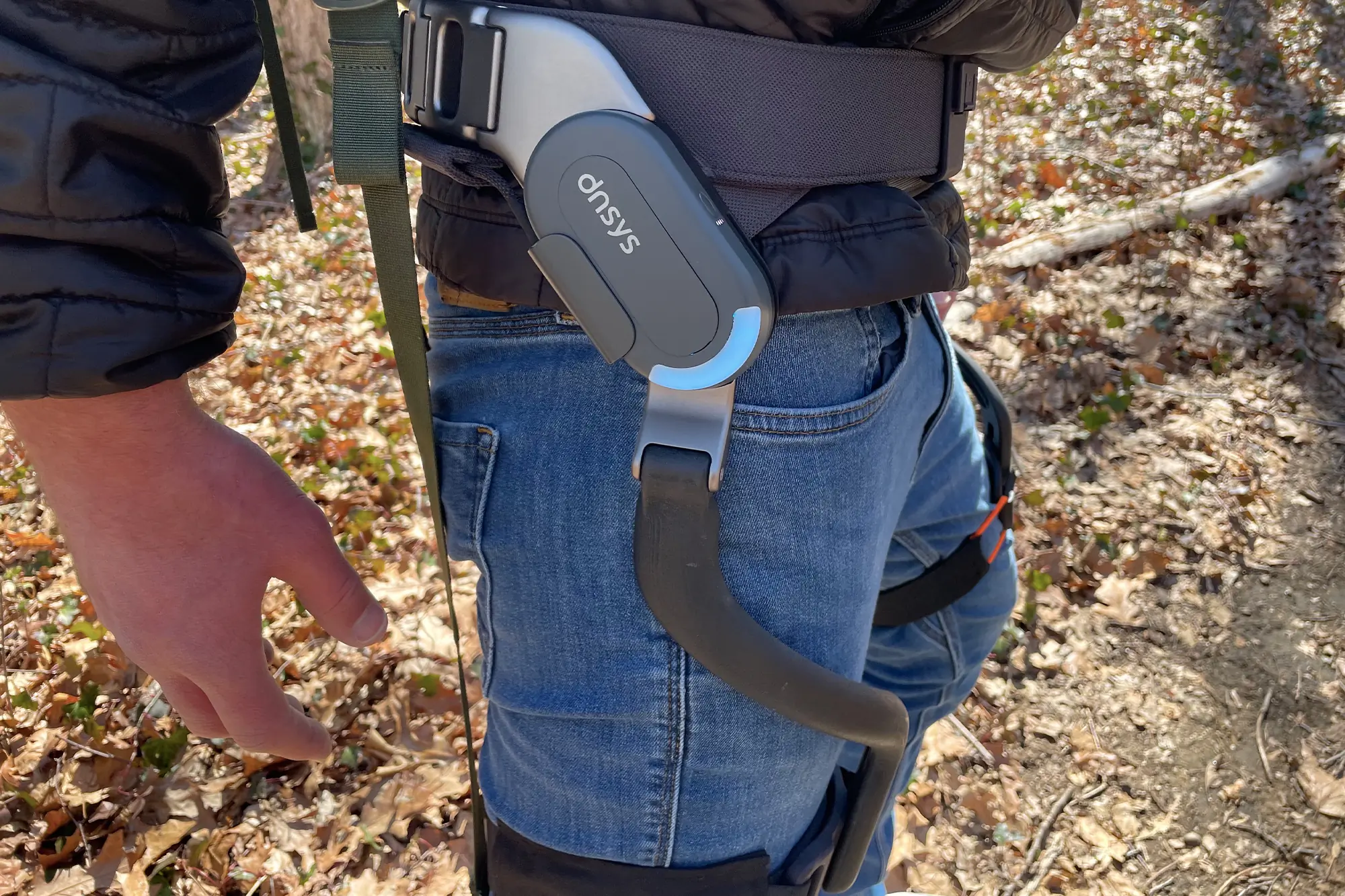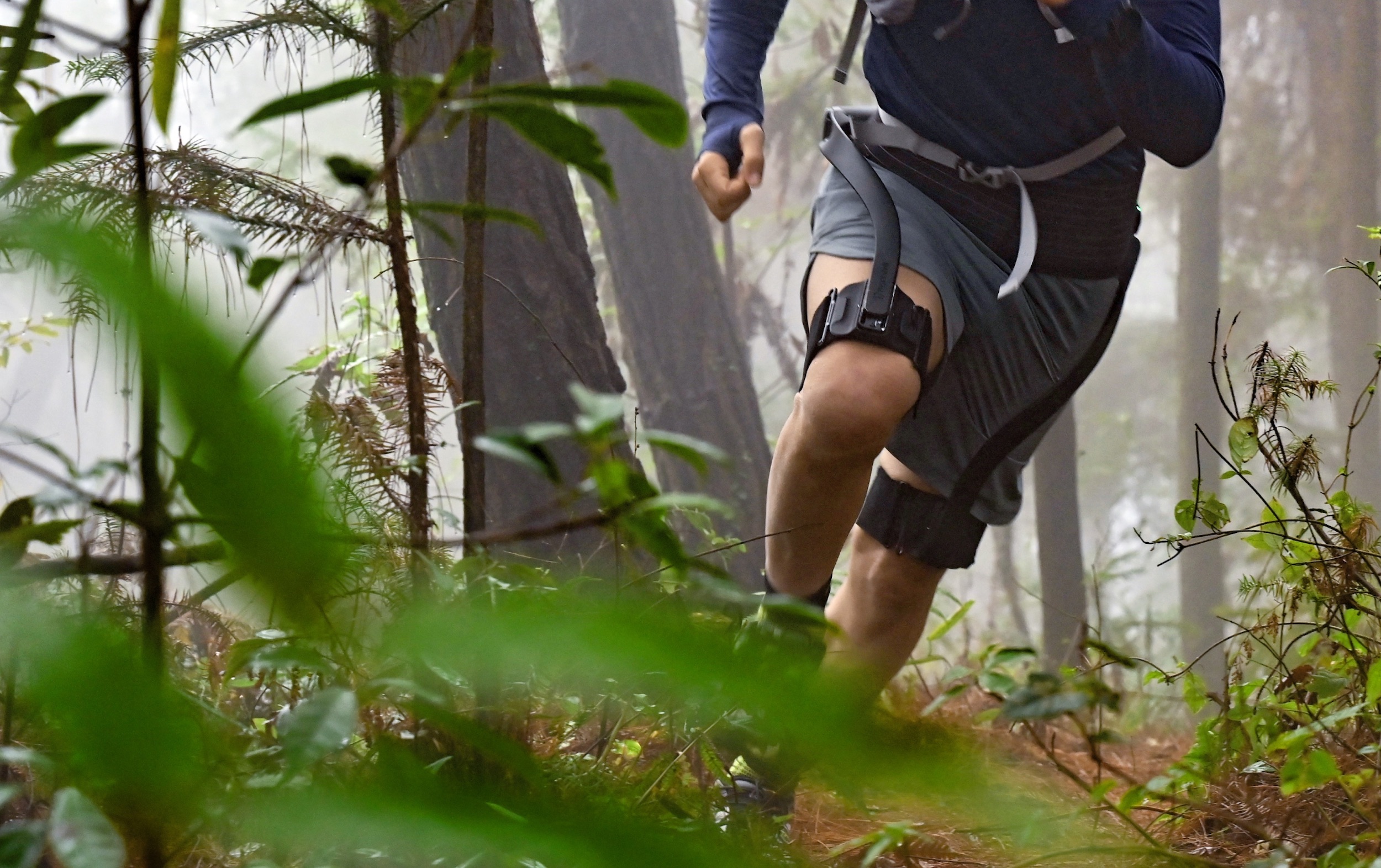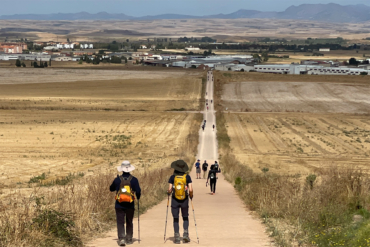Imagine you’re out in the mountains or miles down a trail, and you’re bone tired, sore, spent, and your quads are locking up. But there’s no stopping. Your legs have to carry you back to camp, back to the car, back home, or wherever you might be headed. We’ve all been there.
Five or 10 years ago, the idea of a motorized leg assist system for hiking or jogging would have sounded like some futuristic sci-fi nonsense. But in the strange world of the present, it’s consumer technology. GearJunkie has covered similar devices like the Hypershell Exoskeleton and the ski-focused Roam exoskeleton. I recently got to try another one.
The Dnsys X1 Exoskeleton uses a pair of AI-informed electric motors that attach to the user’s hips and thighs. When the system is fired up, the pistons assist with every step, leap, or lunge.
Yes, it sounds weird. And yes, the first few times I used the X1 system it felt weird. It was also a lot of fun. It made hiking up and down the wooded hills near my home palpably easier — but only once I got my hiking exoskeleton dialed in. That took a bit of effort, but it was ultimately worth it.
In short: The X1 Exoskeleton from Dnsys is a futuristic leg assist system. Similar to an e-bike, it uses powerful electric motors to add power to your legs as you walk, hike, or jog. The X1 can help you move faster over long distances while reducing strain and fatigue. It could also help people with limited mobility access the outdoors and get around with greater autonomy. It just looks a little funky.
- Weight: 3.53 lbs.
- Range: 15 miles per charge
- Power output: 900W/1.2 horsepower
- Materials: Aluminum alloy, carbon fiber, nylon fabrics
Pros
- Reduces user fatigue and soreness
- Increases range and speed
- AI-controlled to respond to motion in real time
- Can assist individuals with limited mobility
Cons
- Unsettling feeling during initial use
- Getting perfect fit takes a while
- Expensive
Dnsys X1 Exoskeleton Review
I tend to hike primarily for recreation because I really like being out in nature, especially the mountainous kind of nature. I also appreciate the exercise element of a good hike. Who wouldn’t rather get their cardio and some strength training on the trail than in the gym?
Thus, I was initially pretty skeptical of a system that would purportedly do a lot of the work of hiking or trail running for me. That work is all part of hiking. But then I started to think about those extra-long hikes or those uphill treks that take their toll on the body and thought that maybe having a helping hand — or helping cyborg leg motors — might be worth trying, at least.
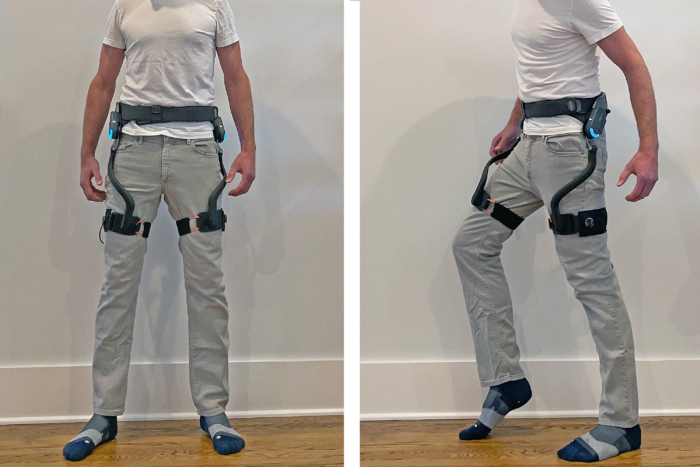
Hiking With the Dnsys X1 Exoskeleton
The X1 straps onto your waist using a large band that can be adjusted with a telescopic panel. It secures a pair of carbon fiber leg rods to your thighs with hooks and loops. The semi-elastic straps are adjustable with a BOA system.
At the rear of the unit is an ECU, which is the central hub controlling everything. The X1 uses easily swappable external high-density lithium-ion batteries. Those need to be tucked into a pocket or pack. Dnsys sells extra batteries for this system so users can carry several and switch them out as necessary.
Once I had my X1 strapped to my body and carefully adjusted, I powered it on and immediately set it to the most intense level of assistance. Why not? I set off down a relatively flat trail. Within three steps, there came a mechanical whirring sound from the DNA-1 motors beside my hips. Sure enough, I could suddenly feel my legs being propelled forward with each step.
It felt like a pair of hands were helping me move my legs.
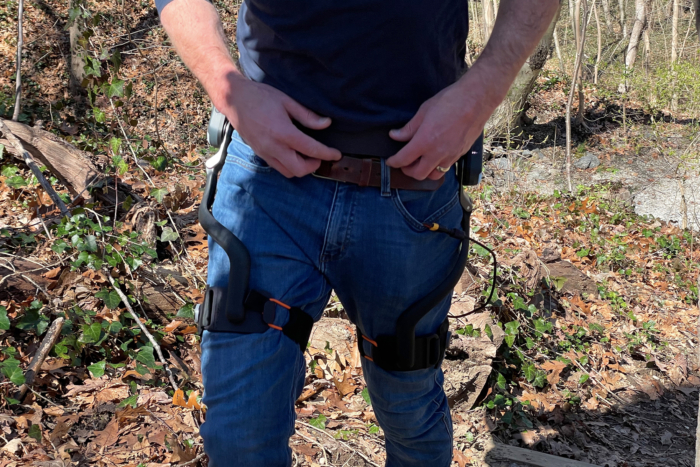
Feeling the Power
Eventually, I reached a steep enough section of trail that it had steps built into it. I powered uphill, and suddenly, I grasped how effective the X1 can be. At the top of the hill, I paused. I turned around to gauge the distance I’d covered. It was at least a 200-foot trek with a solid 40 to 50 feet of elevation gain.
I’ve been running and hiking long enough to know that at the speed I ascended, my legs should have been burning. But they weren’t. They were barely activated. My cyborg body really could go farther, faster, and in more trying conditions with less pain and strain.
I strapped the X1 system on again later and went up and down the staircases in my home. My thighs never once started to burn, even after multiple rapid ascents.
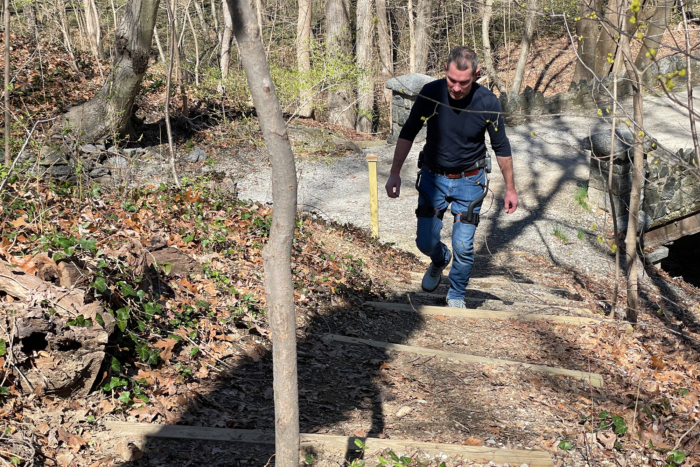
Specs and Product Claims
Dnsys claims that the X1 system can reduce body and gear weights by 81 pounds at its maximum setting. It also claims that this hardware can offer speed assistance up to 16.7 mph. One charge has a 15.5-mile range. At peak power, it generates around 1.2 horsepower.
The Dnsys Smart AI Motion Assist tech employs a deep learning algorithm called Dynamic Neural Network Assist System. According to the Kickstarter page, it works in tandem with a dual-core 240MHz AI processor and dual motor control processors.
Together, the system accurately predicts how your muscles will fire in real time. It provides adaptive support to your legs that reduces muscle fatigue and lightens the load you’re carrying.
The X1 also features a “Workout Mode” offering isokinetic exercise, a type of strength training often used for rehabilitation. That mode protects your knees during downhill descents and enhances calorie burn, according to the brand.
So, does it work as well as its creators would like us to believe? I’ll wait until we have more data to crowd-source before making that call. Does it work pretty damn well? It certainly does. Wearing this exoskeleton greatly boosted my hiking performance, especially up hills.
Pricing and Availability
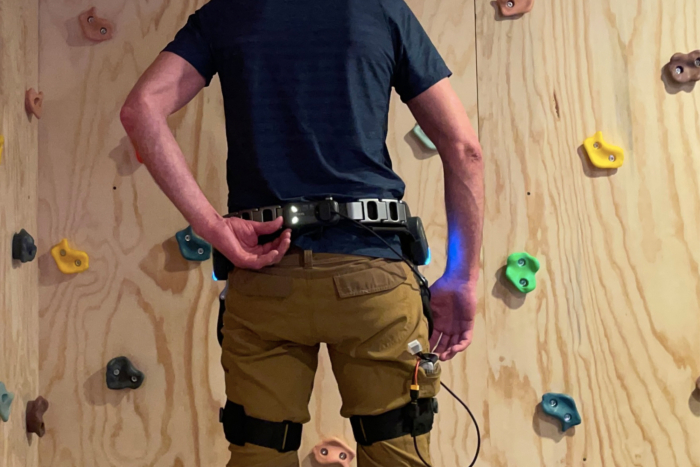
Right now, the Dnsys X1 Exoskeleton is still raising money on Kickstarter. As of this publication date, it had raised more than $226,000 with an originally stated goal of just $5,000. It is offering deals on the first commercial X1 systems for backers of the campaign. There are three different models on different price tiers.
The Dnsys X1 Exoskeleton Lite (the unit I got to test) will retail for $800. The early bird discount for campaign backers drops that to $500 (37% off).
The Dnsys X1 Exoskeleton Carbon (which uses carbon fiber in its construction instead of fiberglass) will retail for $1,200. A super early bird discount drops that to $600 (50% off), and a regular early bird discount drops it to $700 (37% off).
Finally, the Dnsys X1 Exoskeleton Carbon Pro (which is built with carbon fiber and titanium) will retail for $2,000. The super early bird deal discounts that to $1,000 (50% off), and a regular early bird deal discounts it to $1,100 (37% off).
Downsides of the Exoskeleton
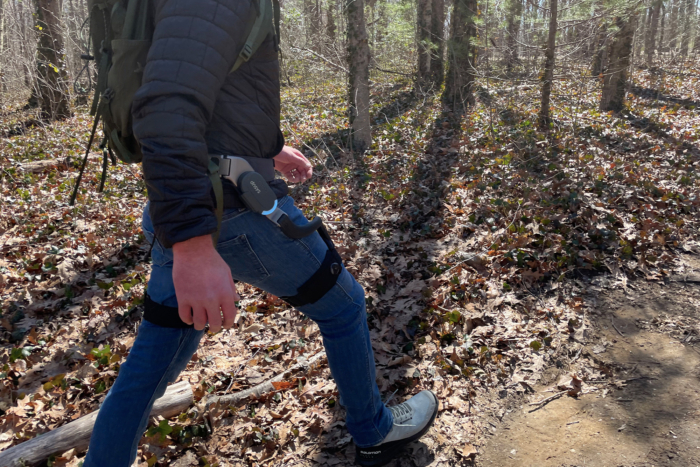
As noted, setting up and dialing in the X1 is not very straightforward. I fidgeted with the hardware for a long time, and it was challenging to get it to fit snugly enough to be effective but not cause discomfort or restrict blood flow.
Also, while the X1 Exoskeleton can effectively reduce the overall weight your body is hiking with, it weighs more than 3.5 pounds on its own. It is a hefty piece of hardware, and it’s awkwardly shaped. So if you run out of battery life while still far afield, you will be left with a lot of extra gear weight and bulk to carry out.
Finally, the whole apparatus does look rather odd. Cool, sure. Futuristic, yes. But it’s also just odd. You will get looks on the trail if you wear this thing for a hike or run.
Dnsys X1 Exoskeleton Conclusion: Who Is It For?
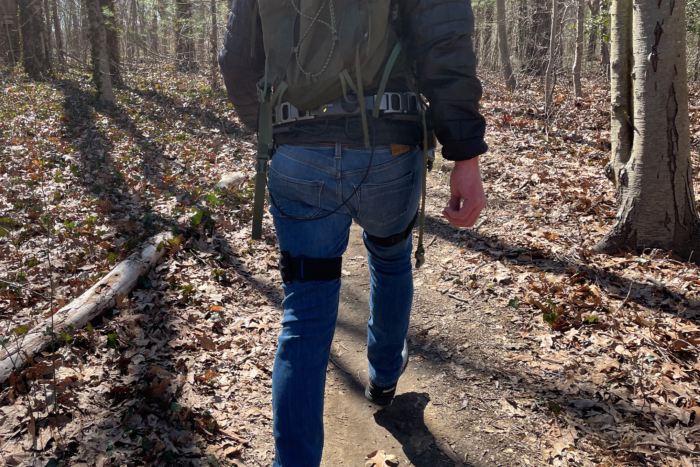
The Dnsys X1 Exoskeleton was a lot of fun to hike with. But it’s not a system I see myself using all that often. However, if I were to sustain an injury that limited my mobility, I’d break out the X1 and strap it on in a second.
I would highly encourage anyone whose ability to trek or jog is limited by injury, age, or fitness level to try the system out. It will help people go farther and faster than they thought possible. It would be a great tool for physical therapy or rehabilitation to help people get outside and get moving.
The Kickstarter also notes that this system could be useful for professionals who are moving and on their feet all day long. Action photographers, trail workers, construction workers, or medical professionals might benefit from a system that preserves their walking stamina.
I wouldn’t be surprised if this slightly odd-looking piece of hardware picks up traction. If cyborg-style body-enhancing hiking devices become commonplace on the trail, you saw it here first. And if not, hey, at least we got the chance to test this one out.
It’s a unique system with some unique possible applications. If you want to hike like a cyborg, get your hands on one of these.
